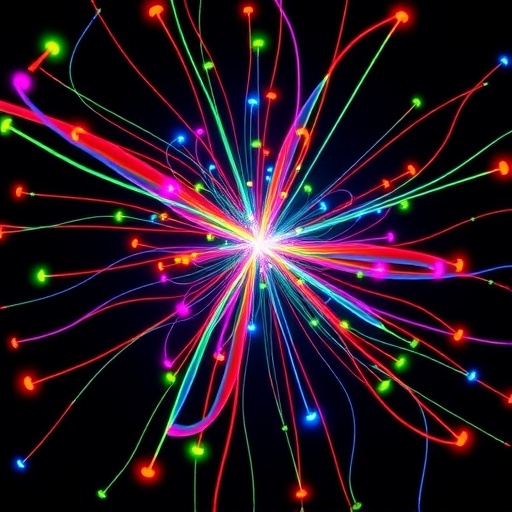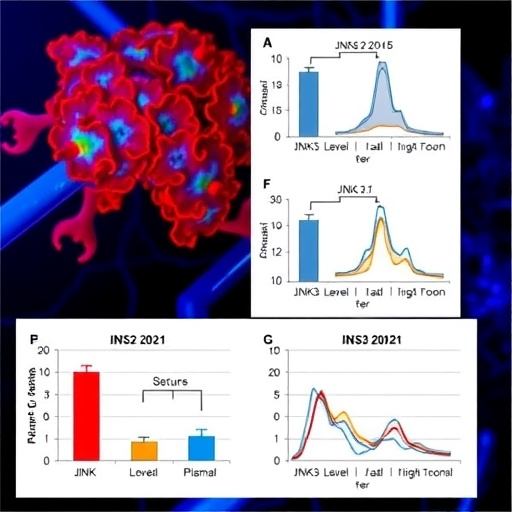In a groundbreaking advance at the intersection of quantum science and molecular biology, researchers have successfully demonstrated coherent quantum control within living cells using a genetically encoded fluorescent protein. This innovation centers on enhanced yellow fluorescent protein (EYFP), a staple protein widely employed as a biological marker, now repurposed as a spin qubit capable of retaining and manipulating quantum information. The extraordinary achievement offers a promising platform for integrating quantum technologies seamlessly with cellular environments, potentially ushering in a new era of bio-quantum sensing and quantum information processing.
The investigation focused on analyzing the behavior of EYFP expressed within two biocompatible environments: human embryonic kidney (HEK) 293T cells cooled to cryogenic temperatures (175 K) and Escherichia coli (E. coli) bacteria maintained at room temperature. Leveraging advanced optical detection methods, the team performed optically detected magnetic resonance (ODMR) measurements, revealing distinct spin resonance signatures intrinsic to the EYFP molecules localized inside the cells. The results demonstrated that the quantum-coherent properties of EYFP are preserved amid the complex and noisy milieu of living biological systems.
Fluorescence imaging provided the initial verification that EYFP remained properly localized within the cytosol of HEK cells fixed onto a sapphire substrate. Upon cooling the sample to 175 K, confocal fluorescence microscopy scans corresponded closely with room-temperature wide-field images, ensuring that the EYFP endured temperature fluctuations without loss of localization or structural integrity. The ODMR signals recorded across six bright cellular regions exhibited clear resonance peaks, which were conspicuously absent in the extracellular spaces, firmly establishing that the detected spin properties originated exclusively from intracellular protein rather than background fluorescence or extracellular contamination.
.adsslot_1ZNpuVr8MC{width:728px !important;height:90px !important;}
@media(max-width:1199px){ .adsslot_1ZNpuVr8MC{width:468px !important;height:60px !important;}
}
@media(max-width:767px){ .adsslot_1ZNpuVr8MC{width:320px !important;height:50px !important;}
}
ADVERTISEMENT
Quantitative analysis enabled an estimation of the EYFP concentration within HEK cells, yielding values near 11 ± 7 micromolar. This concentration aligns with expectations from common transient transfection protocols, verifying the method’s compatibility with standard cellular protein expression techniques. Such reproducibility is crucial for future applications, as it underscores the potential to tailor and optimize quantum protein expression levels within biological hosts for precise quantum sensing or information processing tasks.
Extending their inquiry to physiological temperatures, the researchers conducted ODMR measurements within living bacterial cells. Pellets of E. coli expressing EYFP were placed on the sample stage under room-temperature conditions, circumventing the need for cryogenic cooling. The resultant ODMR spectra unmistakably revealed high-contrast spin resonance signals, despite the anticipated challenges posed by ambient cellular autofluorescence and thermal decoherence. Remarkably, the use of optically accelerated delayed fluorescence (OADF) played a pivotal role here. This time-delayed fluorescence technique efficaciously suppressed the often overwhelming background emission endemic to biological samples, culminating in exquisitely sensitive spin detection.
Furthermore, the reported ODMR contrast in EYFP far exceeds previous attempts to detect spin physics in biological media. The inherent time-delayed nature of OADF not only enhances contrast by decoupling fluorescence signal from prompt cellular autofluorescence but also allows the interrogation of spin coherence with minimal background interference. This characteristic, combined with the well-established genetic encodability of fluorescent proteins, sets EYFP-based qubits apart from exogenous nanomaterial quantum sensors that often necessitate invasive delivery mechanisms.
Significantly, the ability to perform room-temperature ODMR on live bacterial cells marks a vital milestone toward practical, non-invasive quantum biosensing technologies. Achieving coherent quantum control at ambient conditions surmounts a long-standing obstacle in quantum biology, vastly increasing the feasibility of deploying these technologies in standard laboratory settings or real-world biological applications. The fusion of optical interrogation, spin resonance, and genetic engineering epitomizes an elegant synergy pushing the frontiers of interdisciplinary science.
This novel bio-quantum platform also opens intriguing avenues for quantum-enhanced imaging and information storage within the cellular context. EYFP’s natural fluorescence facilitates optical readout, while its spin degree of freedom offers a complementary quantum resource for encoding additional levels of information. Future refinements could allow multiplexed quantum measurements within heterogeneous tissues, enabling simultaneous high-fidelity sensing of multiple physiological parameters at the nanoscale.
While the current investigations employed cryogenic temperatures for HEK cells and ambient for bacterial cultures, ongoing research will likely optimize conditions to achieve robust quantum coherence fully compatible with living mammalian cells at physiological temperatures. Advances in protein engineering, spin coherence preservation, and optical manipulation techniques may further extend the lifetime and fidelity of these qubits, vital for practical quantum biosensing and information processing.
In sum, the demonstration of coherent control over EYFP spins inside living cells is a pioneering leap toward realizing genetically encodable, optically addressable quantum bits within the realm of biological environments. This research not only broadens our understanding of spin physics in complex biochemical systems but also lays the groundwork for future applications at the convergence of quantum technologies, molecular biology, and nanomedicine. As quantum biology emerges from theoretical speculation into tangible experimentation, EYFP-based spin qubits symbolize a transformative tool with far-reaching scientific and technological potential.
Subject of Research:
Genetically encoded fluorescent protein EYFP as a spin qubit enabling coherent quantum control and measurement inside living cells.
Article Title:
A fluorescent-protein spin qubit.
Article References:
Feder, J.S., Soloway, B.S., Verma, S. et al. A fluorescent-protein spin qubit. Nature (2025). https://doi.org/10.1038/s41586-025-09417-w
Image Credits: AI Generated
Tags: bio-quantum sensing applicationsbiocompatible environments for quantum researchcoherent quantum properties in biologyenhanced yellow fluorescent proteinEYFP in human embryonic kidney cellsfluorescence imaging in cellular biologygenetically encoded fluorescent proteinoptically detected magnetic resonancequantum control in living cellsquantum information processingquantum technologies in molecular biologyspin qubit technology





